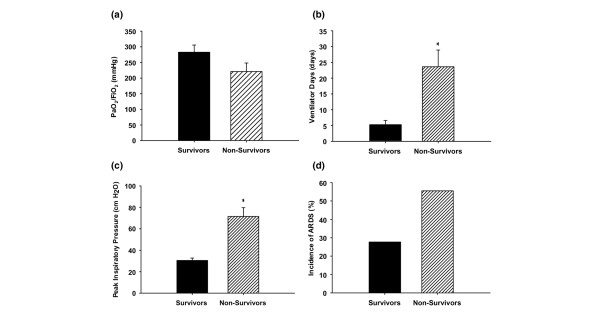Figure 2.
Nonsurviving pediatric patients with inhalation injury display more severe deterioration of lung function than their surviving counterparts. (a) The arterial oxygen tension (PaO2)/fraction of inspired oxygen (FiO2) ratio of severely burned children with inhalation injury who did not survive was lower than in those who survived (220 ± 27 mmHg versus 282 ± 23 mmHg). (b) Burn patients with inhalation injury who had a fatal outcome had significantly more ventilator days than children who survived (24 ± 5 days versus 5 ± 1 days). (c) Nonsurvivors exhibited significantly higher peak inspiratory pressure rates than survivors (71.5 ± 8.2 cmH2O versus 30.6 ± 2.1 cmH2O). (d) Severely burned children with concomitant inhalation injury who did not survive had a higher incidence of acute respiratory distress syndrome (ARDS) than did those who survived, which was not statistically significant (55.6% versus 27.7%). Bars represent means; error bars correspond to standard error of the mean. *P < 0.05.

